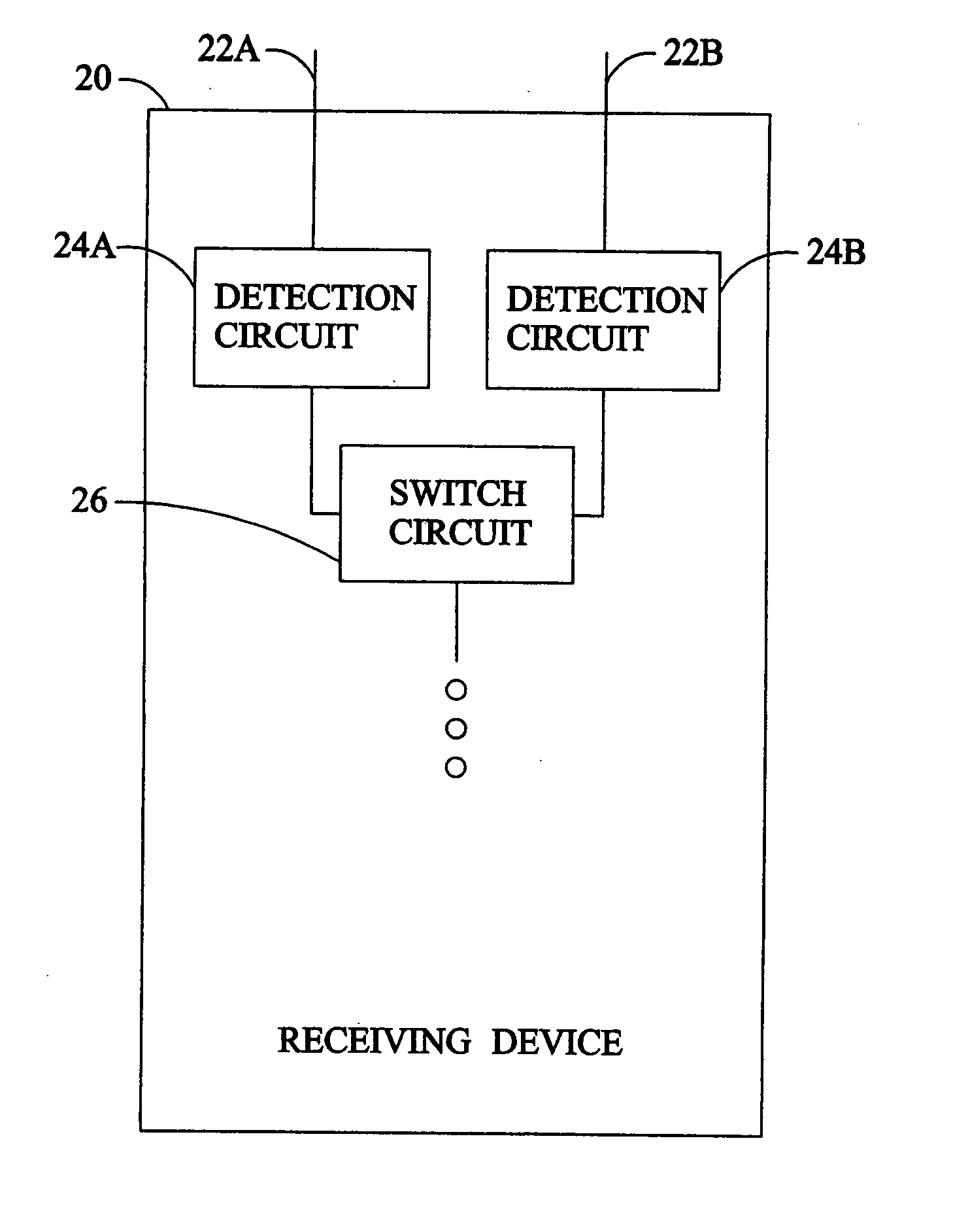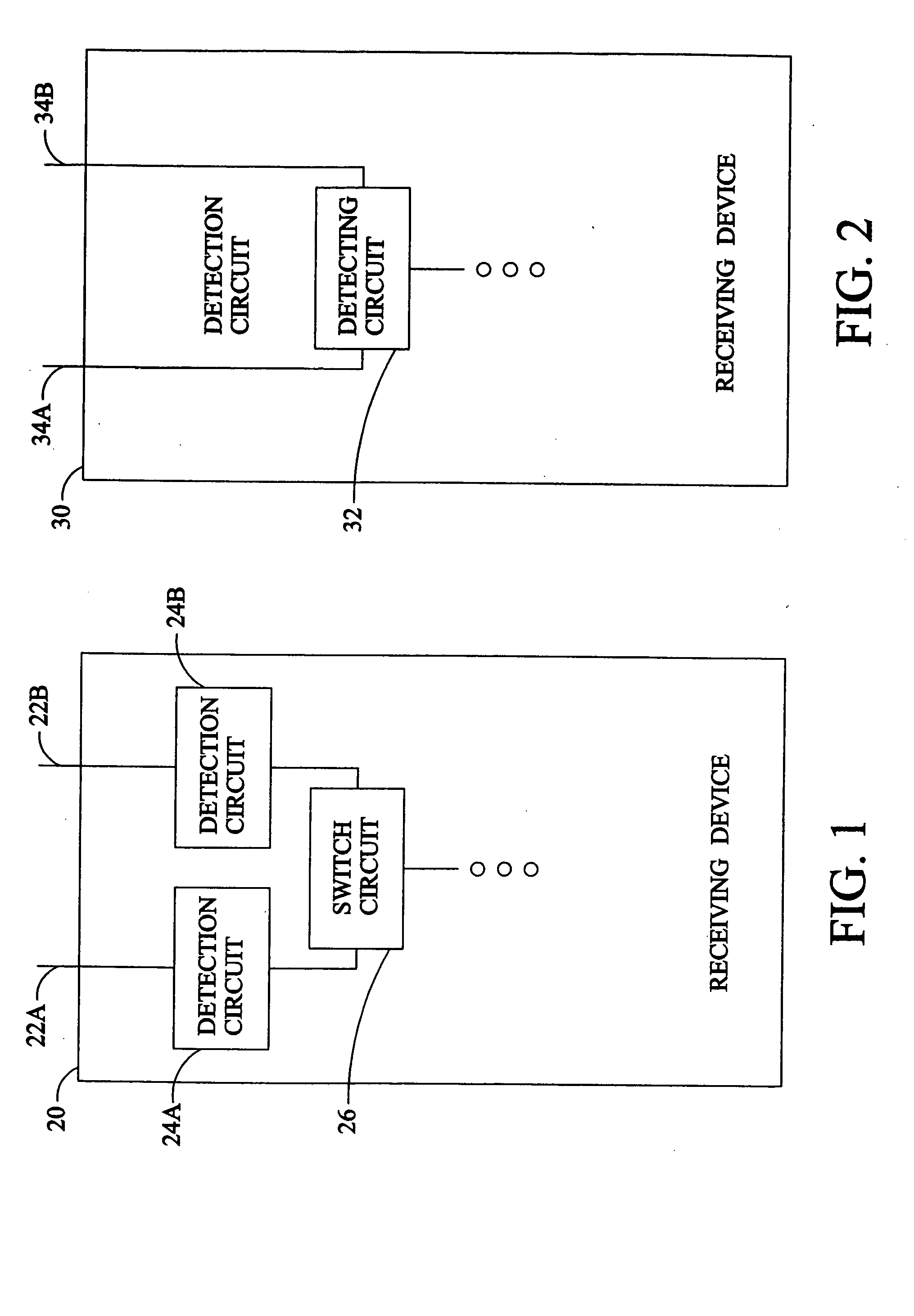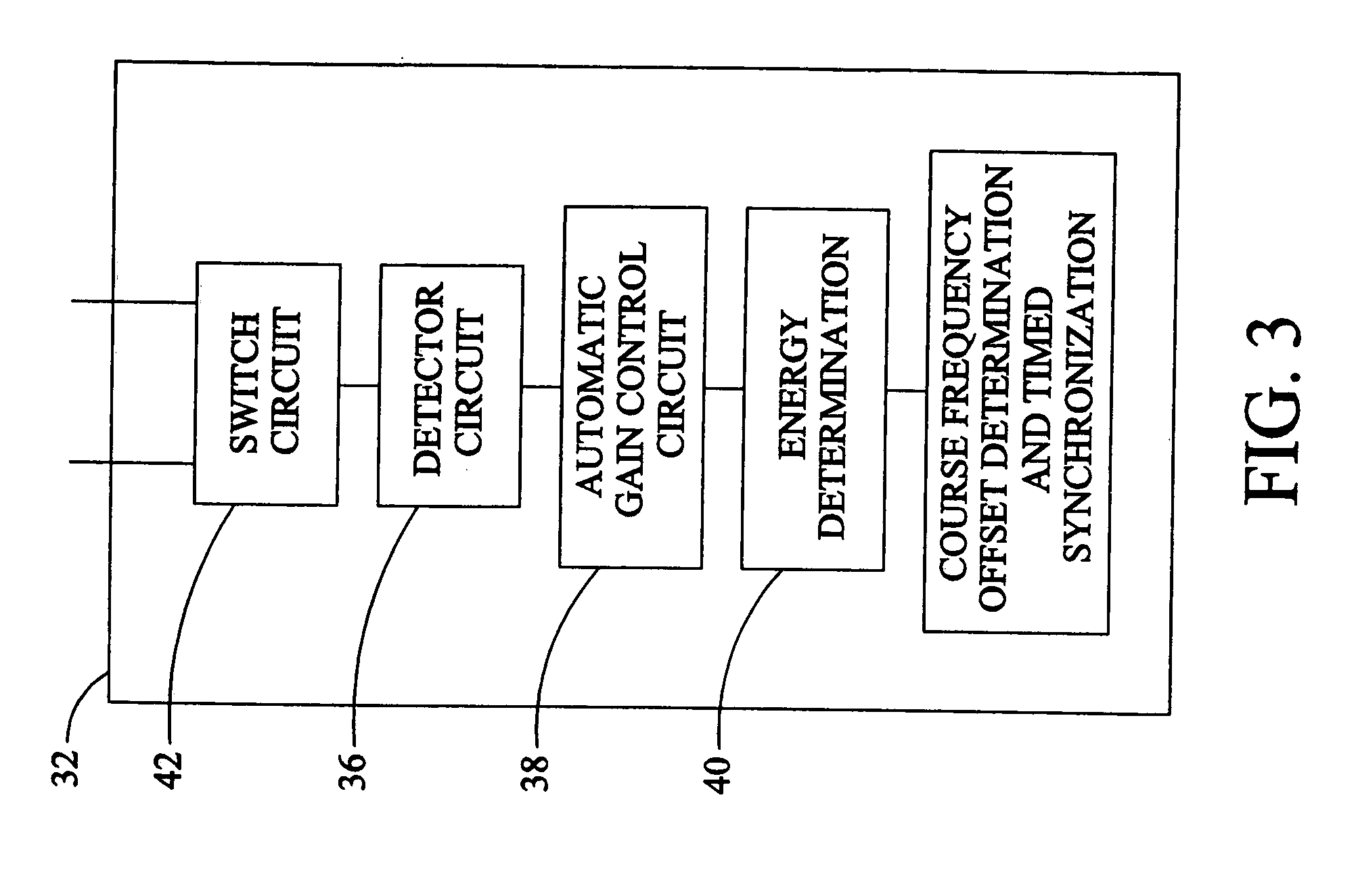Data unit detection including antenna diversity
a data unit and antenna technology, applied in diversity/multi-antenna systems, polarisation/directional diversity, instruments, etc., can solve the problems of increasing the cost of the receiving device, if at all possible, and difficult reception
- Summary
- Abstract
- Description
- Claims
- Application Information
AI Technical Summary
Benefits of technology
Problems solved by technology
Method used
Image
Examples
Embodiment Construction
[0018] Referring to FIG. 2, a receiving device 30 includes one detecting circuit 32 switched between two or more spaced apart antennas 34a, 34b. In this manner the receiving device 30 only requires a single detecting circuit 32 thereby reducing power consumption and expense. The P802.11A standard requires the determination of many parameters with the ten short symbols provided during the short training sequence. Referring also to FIGS. 3 and 4, the first symbol is sensed by a detector circuit 36 of the detecting circuit 32 from one of the antennas 32a, 32b to sense a data unit. The second symbol sensed by the detector circuit 36 is used by the AGC circuit 38, as previously described. The AGC circuit 38 may require one or more symbols. The third and fourth symbols sensed by the detector circuit 36 are used by the energy determination circuit 40 to measure the signal strength. Next, a switch circuit 42 switches to the other antenna 32a, 32b during the fifth symbol. The sixth symbol is...
PUM
 Login to View More
Login to View More Abstract
Description
Claims
Application Information
 Login to View More
Login to View More - R&D
- Intellectual Property
- Life Sciences
- Materials
- Tech Scout
- Unparalleled Data Quality
- Higher Quality Content
- 60% Fewer Hallucinations
Browse by: Latest US Patents, China's latest patents, Technical Efficacy Thesaurus, Application Domain, Technology Topic, Popular Technical Reports.
© 2025 PatSnap. All rights reserved.Legal|Privacy policy|Modern Slavery Act Transparency Statement|Sitemap|About US| Contact US: help@patsnap.com



